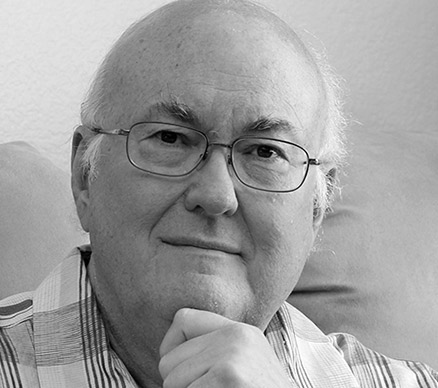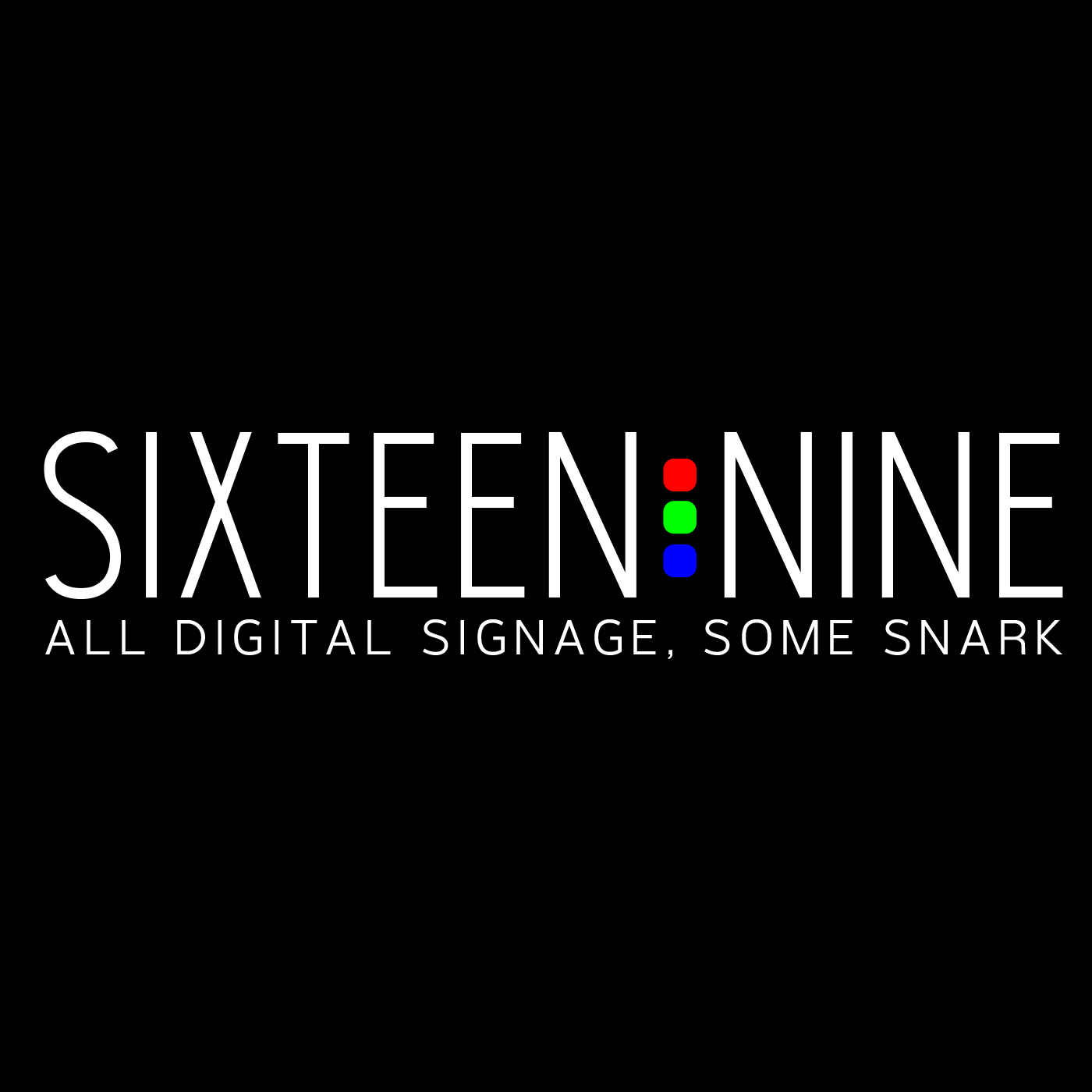Episodes

Wednesday Aug 15, 2018
Kyle Pilot, iGotcha
Wednesday Aug 15, 2018
Wednesday Aug 15, 2018
I was in Montreal recently and had a chance to visit the offices of iGotcha, a digital signage and experiential media solutions company that has very quietly built up a nice book of business since launching in 2005.
Working out of an old warehouse building overlooking the historic Lachine Canal, iGotcha works with everyone from banks and a lottery corporation to Cirque du Soleil.
I caught up with Kyle Pilot, one of the co-founders and the longtime CTO. He now runs the company with business partners Greg Adelstein and Hadrien Bessou.
In this chat, we get into what they do, who they work with, and get on a fairly lengthy riff about the merits of technology like System on Chip displays.
Subscribe to this podcast: iTunes * Google Play * RSS

Wednesday Jul 25, 2018
David Anderson, Mimo Monitors
Wednesday Jul 25, 2018
Wednesday Jul 25, 2018
When it comes to displays in digital signage, just about all the attention goes to screens that have steadily grown bigger, skinnier and brighter.
Not a lot of attention or time has been spent on small screens - but there's a real and growing market demand for displays in places like retail that don't eat up all the merchandising space and better suit the store environment.
While the vast majority of display manufacturers have been fighting it out based on large displays, Mimo Monitors has, since 2008, been focused on small displays. The company's sweet spot is a 10-inch tablet-sized screen that will actually survive in commercial environments, unlike consumer tablets.
I had a brief chat with Mimo's President, David Anderson, at InfoComm last month, and we followed that up the other day with a proper podcast chat. Among the things you'll hear about: what that name is all about.
Subscribe to this podcast: iTunes * Google Play * RSS

Wednesday Jul 18, 2018
Gordon Feller, Meeting Of The Minds (Smart Cities)
Wednesday Jul 18, 2018
Wednesday Jul 18, 2018
I can't say I've been all the enthralled by what I've seen so far with smart cities initiatives that involve digital out of home media companies. For the most part, they're just digital posters with some wifi and maybe some sensors tossed in so the things can be called "smart."
Those things exist to run ads, and the "smart" thing is largely a veneer to get the ad concession, and for city governments to get free stuff that purports to make their burg seem somehow innovative.
BUT ... there's a lot of potential there, and when you talk to someone who spends all his time thinking about and working on smart city initiatives, you learn there are some good things happening not only with broader smart initiatives, but also with efforts that DO involve media companies.
I wrote a mildly snarky piece recently about this stuff, and Gordon Feller sent me a note suggesting I have a look at a report he did for the Outdoor Advertising Association of America. He's a longtime Silicon Valley tech exec and founder of Meeting Of The Minds, a non-profit public-private partnership that's all about creating smarter cities.
We had a frank talk about what's happened to date, where it really works, and what he sees as the vast potential for smart cities that work with media companies and digital signage technologies.
Subscribe to this podcast: iTunes * Google Play * RSS

Wednesday Jul 11, 2018
Nick Fearnley, Signstix
Wednesday Jul 11, 2018
Wednesday Jul 11, 2018
I am guilty of thinking about SignStix as yet another smallish digital signage CMS company scratching out a living with low-cost subscriptions and equally low-cost Android stick players.
Based in Yorkshire, England, SignStix is a lot more than that. The company is indeed small, but doing some stuff that is a little bit mind-blowing. It does digital signage, but for some significant clients it is doing a lot of back-of-the-house data-mining and aggregation for communications that go beyond screens.
What I found really interesting is learning from CEO Nick Fearnley how the company is using the intelligence on system on chip "smart" displays to do things like manage and aggregate geo-fencing data from trucks moving in and out of a retailer's loading docks. It's stuff that would much more normally be done by full PCs, and it is completely counter to the suggestion still out there that these smart displays aren't all that bright.
Fearnley and I chatted at the back of one of the halls at InfoComm, last month in Las Vegas. You'll enjoy the chat, and particularly his Yorkshire accent.
Subscribe to this podcast: iTunes * Google Play * RSS

Wednesday Jul 04, 2018
Art Stavenka, Kino-Mo
Wednesday Jul 04, 2018
Wednesday Jul 04, 2018
I've been to a few trade shows now where the fast-spinning LED light sticks - marketed as Hypervsn - attract big crowds and have a lot of people whipping out their phone cameras. The technology definitely creates buzz, so I wanted to know more about the technology and the company behind it.
It uses the phenomena of persistence of vision to create motion visuals that have dimension to them - a sort of hologram.
When these things were one-off blades - like wall fans - I saw no real commercial opportunity. But Kino-mo, the London, UK company behind Hypervsn, has now figured out a way to sync multiple units and create very large motion displays. That changes things.
I spoke with company co-founder Art Stavenka at InfoComm, and asked him some fairly pointed questions about reliability of devices that are furiously spinning all day long. Digital signage ops people don't like moving parts, and this has a lot of them.
It's a relatively short chat, by the normal standards of this podcast, but worth a listen if you've seen this tech and want to learn more.
Subscribe to this podcast: iTunes * Google Play * RSS

Wednesday Jun 27, 2018
Greg Topel, Tanvas
Wednesday Jun 27, 2018
Wednesday Jun 27, 2018
Imagine if you could feel what you see on a touchscreen. If, for example, you could unzip a zipper by drawing your finger down a screen and experiencing that familiar sensation.
That's the premise behind a Chicago startup called Tanvas, that is using haptics technology to enable users of interactive screens to have genuine touch added to their experiences when using touch technology.
As Greg Topel, the company's CEO puts it, smartphones have conditioned billions of people to experience information with flat, lifeless pieces of glass. His Tanvas team argues that's all wrong, and that the sense of touch is critical to real world interactions.
We all order stuff online and wish we could somehow get a sense of things, like the different thread counts of cotton sheets. Using a simple touch overlay on screens, equipped with tech from Tanvas, that would be possible.
I sat down with Topel at InfoComm in Las Vegas, and he explained the roots of the company, commercial plans and most importantly, how this stuff works.
Subscribe to this podcast: iTunes * Google Play * RSS

Wednesday Jun 20, 2018
Brett Jones, Lightform
Wednesday Jun 20, 2018
Wednesday Jun 20, 2018
One of the most interesting companies I saw recently at InfoComm in Las Vegas was Lightform, a San Francisco start-up that is making the once dark art of projection mapping available to just about everyone.
It wasn't that long ago that projection mapping was all about very ambitious, very complicated, very expensive projects that only a handful of companies had the chops to pull off.
Now we have a company with a $700 device and related software that makes it possible for just about anyone to do small-scale projection mapping on things like a merchandising display or a wedding cake.
Lightform calls this Projected Augmented Reality - the idea that AR is not something that needs to be seen though the lens of a smartphone.
I spoke with CEO and co-founder Brett Jones, and we did our best to describe to listeners what we were seeing as we walked around the booth.
Subscribe to this podcast: iTunes * Google Play * RSS

Wednesday Jun 13, 2018
Jonathan Gudai, Adomni
Wednesday Jun 13, 2018
Wednesday Jun 13, 2018
A Las Vegas startup called Adomni represents the latest effort through the years to roll up digital OOH networks with the idea of making media buying and execution easy.
Many have tried, few have succeeded, but here's what's different about Adomni. First, they're primarily going after outdoor billboards, and they're not trying to be THE buying and selling solution. You go through Adomni online to buy the unsold inventory on these screens, and almost any media inventory has unsold inventory.
It's also different because the founders looked at the marketplace and what was already out there, thought about the user base, and came up with a user experience that's about as visually friendly and dead simple as AirBnB. Instead of renting a basement apartment for a few days, a small business owner might rent time slots on some boards along a freeway near their main store.
I spoke with one of the founders, Jonathan Gudai, over Skype from his office down near McCarron Airport.
Subscribe to this podcast: iTunes * Google Play * RSS

Thursday May 31, 2018
Arie Stavchansky, Dataclay
Thursday May 31, 2018
Thursday May 31, 2018
Anyone who works with creative teams knows there is no such thing as a content fairy. Video spots don't magically appear in inboxes overnight. Somebody had to design and render that video, and that work, frankly, takes a while.
So it's a little freaky to talk to a company that can do 1,000s of good-looking, customized videos in a matter of hours. But that's what Dataclay is all about.
The little company operating out of Austin, Texas has written the software and services that can mass-produce data-driven videos at pretty much the click of a mouse. And these aren't crappy, simplistic videos no one would want anyway. They come out of Adobe After Effects, full After Effects templates, and a plug-in written by Dataclay.
Imagine a national realtor being able to mass-produce a piece of video for every listing that comes into its databases - photos, details, the whole nine yards. Imagine a theme park spitting out videos instead of 8 by 10s that families can buy when they leave a ride or the park. Imagine a custom highlights video of every runner in a marathon ... kinda like this ...
I spoke with company founder Arie Stavchansky about how the platform he built brings automation and industrial-scale video production to digital signage, advertising and marketing.
Subscribe to this podcast: iTunes * Google Play * RSS

Wednesday May 30, 2018
Mitch Goss, Zero-In
Wednesday May 30, 2018
Wednesday May 30, 2018
There are lots of companies out there that call themselves turnkey digital signage solutions providers, but far fewer who can do so with straight faces.
A company called Zero-In has been doing just that for the last decade, and has developed a nice book of business doing the whole nine yards of signage work - from creative to deployment and ongoing operational management.
The New York company's customers include everyone from big banks and retailers to Shake Shack - the burger and shakes chain started just steps away from where Zero-In now has its main office in the Flatiron district.
I spoke with company founder Mitch Goss about the challenges and opportunities of building and running networks for clients.
Subscribe to this podcast: iTunes * Google Play * RSS

Wednesday May 23, 2018
Sheldon Silverman, Smartbomb Media
Wednesday May 23, 2018
Wednesday May 23, 2018
If you deal with companies over in Europe, you've probably been carpet-bombed lately by email requests to update your subscription settings for things like product announcements.
That all owes to something called GPDR, the General Data Protection Regulation that goes into effect in the European Union at the end of this week.
You can count me in as someone who barely has the acronyms correct, never mind a grip on what it means. The short story is that it is a law on data protection and privacy for all individuals within the European Union, and it also addresses the export of personal data outside the EU.
So if you are in digital signage or digital out of home, in particular, you should care about this. GDPR is a problem for a lot of digital media companies, but an opportunity for those that use anonymous data, like a lot of place-based media operators.
Sheldon Silverman, the CEO of Chicago-based SmartBomb Media Group, has his head around all this. So I asked Silverman, who also heads the Digital Signage Federation's Global Digital OOH Council, if we could do a podcast to fill the rest of us in. Get a pen and paper. This is worth taking notes ...
Subscribe to this podcast: iTunes * Google Play * RSS

Wednesday May 16, 2018
Matt Gibbs, UPshow
Wednesday May 16, 2018
Wednesday May 16, 2018
A whole bunch of startups have through the years, tried to crack the restaurant and bar business with a digital out of home advertising model that saw them put in screens and media players, hoping to claw back the costs, and more, through advertising.
And a whole bunch of them - most of them, in fact, have failed. Advertising is hard.
So I was intrigued by a three-year-old Chicago company called UPshow that is doing user-generated content and digital signage in bars, and making a go of it on a subscription basis - with no third-party advertising. At least for now.
The bar owners - from small ones all the way up to chains like TGI Fridays and Hooters - actually pay money month to month for the service. The owner/operators like that UPshow's content is fresh, and human moderated, and that customers are engaged. They also like that it is selling more drinks and specials, and generating return business.
I spoke with Matt Gibbs, the company's CMO, and one of its co-founders.
Subscribe to this podcast: iTunes * Google Play * RSS

Wednesday May 09, 2018
Alan Brawn, Brawn Consulting
Wednesday May 09, 2018
Wednesday May 09, 2018
One hell of a lot of the people involved in some way with the digital signage business - as a vendor or end-user - have spent a day or more learning the fundamentals from Alan Brawn.
With his son Jonathan, Alan runs a small San Diego-based consulting firm that has been heavily focused for the last many years on education. By his count, some 40,000 people have attended sessions that help people understand what and what not to do, and what Alan calls the seven key elements of digital signage.
Alan could be retired, and he lives in a part of the U.S. where people dream of retiring, but he loves what he does.
This is a chat I've been meaning to do since I started the podcast, and I was very happy I finally got my act together and made it happen.
Subscribe to this podcast: iTunes * Google Play * RSS

Wednesday May 02, 2018
Jason Bier, Federation For Internet Alerts
Wednesday May 02, 2018
Wednesday May 02, 2018
One of the time-honored lines used in digital signage and digital out of home media is how the technology gets the right messages to the right people at the right times.
That's all had to do with marketing and advertising, but a non-profit called the Federation for Internet Alerts has a mission to get crucial alerts in front of the right people at the right times and places to save lives and rescue kids.
Based on years of volunteer work from top coders, pro bono support from agencies and web services, and some grants here and there, the organization is sending critical alerts across North America that warn people about imminent threats like tornadoes, and more insidious threats like bad air.
Almost 1.5 million alerts have been processed since the platform started, and while most of that has been for web and mobile, now the organization is talking to digital out of home media companies about how its alerts could be on big digital screens that are everywhere, and always connected.
I spoke recently with the organizations founder and volunteer CEO, Jason Bier.
Subscribe to this podcast: iTunes * Google Play * RSS

Wednesday Apr 25, 2018
Mark Stross, ANC
Wednesday Apr 25, 2018
Wednesday Apr 25, 2018
ANC got its start about 20 years ago as a rotational signage company that primarily serviced the pro sports business, and through the years, ANC has grown into a big tech services provider that's been putting in the visual systems for many arenas and stadiums.
If you see a big center-hung set of LED boards over an NBA or Division 1 basketball court, or a giant replay board at a ballpark, there's a decent chance ANC is behind it.
More recently the company has found itself getting into digital out of home media, creating the same kinds of visual spectacle you might see in live sports, but instead in public areas or mass transportation hubs. A lot more than a conventional AV systems integrator, ANC is doing a ton of R&D and using product that will do things like light up the whole 360-degree view of an area with sync'd content. You might think, "Well that's not all that new," but ANC's CTO Mark Stross explains why what he's cooked up is different.
I spoke with Stross recently about the idea of taking the spectacle and energy of live events into this new kind of arena of public squares and rail stations, and how he's constantly trying to push possibilities.
Subscribe to this podcast: iTunes * Google Play * RSS

Wednesday Apr 18, 2018
Megan Dutta, Women Of Digital Signage
Wednesday Apr 18, 2018
Wednesday Apr 18, 2018
Megan Dutta and Andrea Varrone have been longtime friends in AV circles, and spoken often about putting together an organization that represented the interests and aspirations of woman in this industry.
They finally saw time open up last summer and started organizing what turned into Women of Digital Signage. The group had its first gathering - a breakfast at Digital Signage Expo - and it went over so well extra tables had to be added.
Though only around since right after the new year, the breakfast attracted almost 100 women and the group already has some 200 members.
Sometimes these kinds of things have a lot of energy at the start, but never really come together. But this isn't one of those times. They have a board, website, social media feeds, an active blog and on and on. This is a going concern.
Dutta and I have been trying and failing to get a call together for weeks, but we finally pulled it off. In this podcast, we talk about the thinking behind the group, its aspirations and how to get involved.
Subscribe to this podcast: iTunes * Google Play * RSS

Wednesday Apr 11, 2018
Jenn Vail, E Ink
Wednesday Apr 11, 2018
Wednesday Apr 11, 2018
E-paper has been around for 20-plus years and it has gradually been improving to a point that it makes operating, commercial and visual sense for digital signage applications.
There are companies like Slovenia's Visionect that do a really nice job of making small black and white displays look beautiful for applications that vary from meeting room signs and hotel reception greeters to solar-powered transit schedule signs. That company, and many others, use E Ink technology.
E Ink spun out of MIT's famed Media Lab more than 20 years ago and is the best known and most successful company in the e-paper field. If you have a Kindle e-reader, you are using Link technology.
The company is now based in Taiwan but a lot of R&D still comes out of the Boston area. They had a big stand recently at DSE - including new four-color large format displays. They looked really nice, though if you didn't know how the tech works you'd swear these screens were having 10-second seizures as they changed content. The refresh rate is still slow and something less than elegant.
I spoke with Jenn Vail, Director of Business & Marketing Strategy, about the past, present and future of e-paper.
Subscribe to this podcast: iTunes * Google Play * RSS

Wednesday Apr 04, 2018
Reece Kurtenbach, Daktronics
Wednesday Apr 04, 2018
Wednesday Apr 04, 2018
Reece Kurtenbach now runs Daktronics, the company started by his father and a university colleague 50 years ago - and has grown up seeing it evolve from electronic voting systems from state politicians to the maker behind some of the biggest and most iconic LED display boards on the planet.
That's Daktronics' tech, for example, creating a huge halo over the amazing new Mercedes-Benz stadium in Atlanta.
We've been trying to make a podcast chat work by Skype - and we had more issues with Skype and Skype for Business getting along - so the opportunity came up last week to have a chat right on the show floor at DSE in Las Vegas.
Kurtenbach talks about the roots of the company, and how the abrupt onslaught of competition in his business is nothing new. We also get into the thinking behind the acquisition of Adflow, a digital signage software shop just up the road from me but way far away from South Dakota, where Daktronics is based.
Subscribe to this podcast: iTunes * Google Play * RSS

Wednesday Mar 28, 2018
Stan Richter, SignageOS
Wednesday Mar 28, 2018
Wednesday Mar 28, 2018
One of the big challenges on the technology side of digital signage is keeping up with all of the emerging hardware and software options on the market.
It used to be a reasonably simple case of developing software in one OS or another and getting it running on a PC. But now there are Android players, Chrome devices, set-top boxes and a variety of so-called smart displays from different manufacturers, most of them different from one maker to the next.
It's a bit of a mess - particularly if you have a content management system and clients asking constantly if the platform works with this or that.
Stan Richter and his company SignageOS saw all of that, and have launched what's being called a unification platform that makes it easy to get a CMS and its player running on multiple kinds of devices. SignageOS sits in the middle and also handles the management and maintenance of the various devices.
The service is white-labelled, and the idea is for software companies to subscribe to SignageOS and build that functionality and cost into their own licensing fees. The company, based in Prague, just launched a month ago, and have 30 NDAs going with software firms. They've got people at DSE today, way at the back of the hall, and eager to talk to potential North American partners.
CEO Stan Richter, who I first met at ISE, filled me in recently.
Subscribe to this podcast: iTunes * Google Play * RSS

Wednesday Mar 21, 2018
Bruce van Zyl, Sellr/Bev TV
Wednesday Mar 21, 2018
Wednesday Mar 21, 2018
Booze is a complicated thing to buy. All the product categories look pretty much the same, so people revert to price, top of mind awareness or labels and names that catch their eye.
One of the ways to improve that situation is by putting digital right into the aisles of liquor stores, where people poke around trying to figure out what they'll like and should buy. A company up in the north Atlanta tech suburbs, called Sellr, is rolling out BevTV displays in stores, with the aim of helping consumers make more informed choices about buying wine, beer and liquor - and hopefully influence buying decisions.
The company got its start in retail hardware, but has transitioned fully into software and content - building up a massive 165,000 item library of curated information about booze that's tied to universal price codes. They make that interactive content available on commercial-grade tablets they install, on their nickel, at eye-level in participating stores.
I talk in this podcast with company president Bruce van Zyl about BevTV's experiences to date, and its plans to have 1,000 units running by this summer.
Subscribe to this podcast: iTunes * Google Play * RSS


